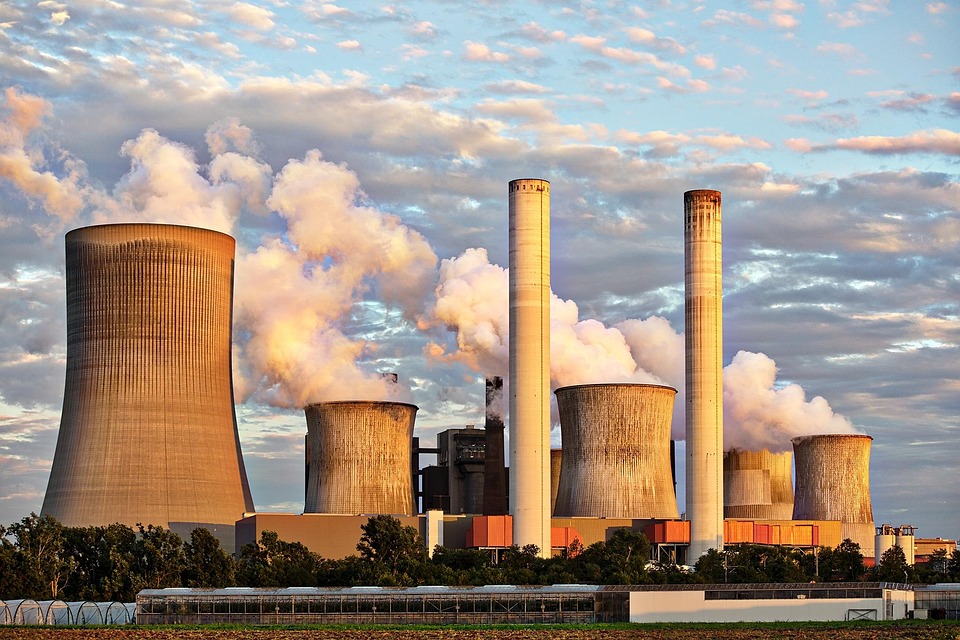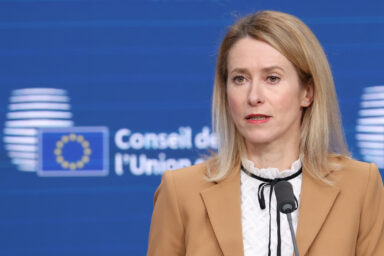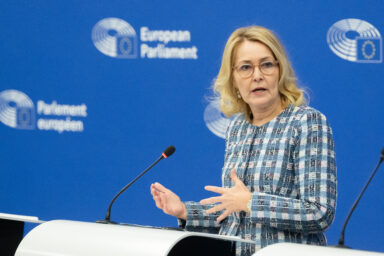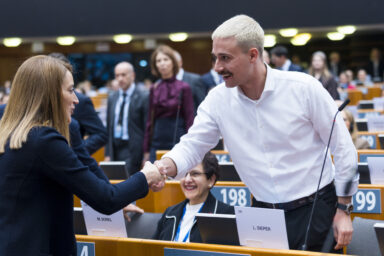The European Union lacks a unified vision on security of power supply. Many countries use capacity mechanisms to back their technologies and meet political security goals. Fragmented approaches, however, hinder cross-border efficiency, as well as private investment, warns Eurelectric, an association of European power providers.
The European Union’s energy policy has long walked a tightrope between ensuring reliable electricity supplies and accelerating the transition to renewable power. At the heart of this balancing act lies the contentious issue of capacity payments, i.e. subsidies paid to energy producers to maintain idle plants or build new ones, guaranteeing they can meet demand during peak periods.
Careful design key
Eurelectric, representing Europe’s electricity providers, agrees these mechanisms can act as “a form of insurance for the power system and the economy as a whole” when properly designed. As renewables’ share of the grid grows, these mechanisms have become a lightning rod for debates over market intervention, fossil-fuel dependency, and equity among member states.
Capacity mechanisms provide payments to power plants to ensure their availability for electricity generation, supplementing their earnings from energy markets. These mechanisms must be carefully designed to avoid distorting the EU’s internal electricity market, where some countries use them while others rely solely on energy-only markets.
The EU mandates that such measures are proportionate, introduced only if necessary, and tied to demonstrated adequacy concerns, ensuring supply-demand balance without undermining market efficiency. Eurelectric told EU Perspectives that “member states should retain flexibility in selecting the most appropriate mechanism” based on national energy mixes and system needs.
You might be interested
Simplification needed
Rising intermittent renewable energy has intensified focus on generation adequacy. The EU Electricity Regulation requires annual adequacy assessments via the European Resource Adequacy Assessment (ERAA), conducted by ENTSO-E (European Network of Transmission System Operators for Electricity, an association representing 40 electricity transmission system operators from 36 countries across Europe, extending the Continental Europe Synchronous Area beyond EU borders) and overseen by ACER (European Union Agency for the Cooperation of Energy Regulators).
These evaluations analyse supply-demand scenarios, renewable availability, demand flexibility, and cross-border infrastructure resilience during system stress. Countries must validate adequacy concerns through this EU-wide framework, ensuring risks are assessed uniformly.
Reforms under the Electricity Market Design streamlined approval processes for capacity mechanisms. The Commission’s 2025 report (COM/2025/65) proposed simplifications, including standardized reliability standards and alignment with ERAA scenarios under the Clean Industrial Deal State Aid Framework (CISAF).
Blackout fears
Member states with adequacy issues must create national implementation plans prioritizing market reforms (e.g., grid upgrades, regulatory adjustments) to address root causes, reserving capacity mechanisms for unresolved residual risks. Annual monitoring reports track progress, with the Commission ensuring reforms reduce reliance on such mechanisms over time as markets adapt.
Capacity mechanisms emerged in Europe after the 2008 financial crisis, as ageing infrastructure and volatile gas prices raised fears of blackouts. Countries such as United Kingdom, France, and Germany introduced payments to keep coal, gas, or nuclear plants operational, arguing that pure energy-only markets – where producers earn revenue solely from selling electricity – failed to incentivise backup capacity.
Critics, however, saw these schemes as subsidies propping up fossil fuels, undermining carbon pricing and distorting cross-border competition. The EU initially took a hands-off approach, but by the mid-2010s, it began tightening state-aid guidelines to prevent capacity markets from stifling renewables or favouring national champions.
Clean Energy Package as a turning point
The European Commission put forward proposals for the EU energy market design on 30 November 2016. The proposal for a regulation on the internal market for electricity recasts Regulation No 714/2009. “It aimed to make the electricity market fit for flexibility, decarbonisation and innovation by providing for undistorted market signals, revised the rules for electricity trading, clarified the responsibilities of the market participants, and defined principles for assessing capacity needs and for market-based capacity mechanisms,“ the EU Legislative Train says.
The 2019 Clean Energy Package, as it became known, thus marked a turning point, requiring capacity mechanisms to open to foreign competitors and subject to “emission performance standards” capping CO2 intensity at 550g per kWh – a threshold that excluded most coal plants. Yet enforcement was lax, and exemptions abounded. Poland, still reliant on coal for 70 per cent of its power, secured transitional allowances. Germany’s “strategic reserve” of lignite plants, ostensibly for emergencies, operated with minimal scrutiny.
Moscow’s game changer
Meanwhile, the energy crisis triggered by Russia’s invasion of Ukraine in 2022 upended assumptions. Soaring gas prices and Moscow’s supply cuts forced even green-minded states like Austria to temporarily revive mothballed coal units, while the EU scrambled to avoid winter shortages.

The 2022-23 energy crisis reshaped capacity mechanisms. Price shocks spurred market interventions, disrupted business cycles, and stalled investments, challenging the energy market’s foundations. As energy security fears grew, scepticism toward capacity mechanisms waned. Markets with investment guidance became preferable to no markets. The EU’s Electricity Market Design (EMD) reform thus enshrined capacity mechanisms as structural components of the electricity market and key tools for security of supply, accelerating approval processes.
In March 2025, the Commission proposed the Clean Industrial Deal State Aid Framework (CISAF) to harmonise capacity mechanism designs and speed up approvals.
Today, Europe’s capacity mechanisms are split: one-third capacity markets, one-third strategic reserves, one-third energy-only markets. In 2024, capacity markets secured 1,793 GW, with a third of payments directed to clean and storage technologies.
Backlash in the East
Broadly speaking, Eurelectric supports this approach. The association says that “capacity markets should be open to all technologies” to ensure security of supply at the lowest cost. Crucially, it required all capacity contracted after 2024 to meet a tougher emissions limit of 350g CO2/kWh by 2030, effectively barring new gas plants unless equipped with carbon capture. The proposal also incentivised demand-side responses, such as paying industries to reduce consumption during peaks.
The plan faced immediate pushback. Poland and Bulgaria decried it as “energy sovereignty overreach”, arguing that their grids needed coal backups until nuclear or renewable projects came online. Gas-dependent Italy and Greece warned that the 350g rule would block modern combined-cycle plants, vital for bridging their coal phase-outs. France, meanwhile, sought exemptions for its nuclear fleet, contending that atomic power’s low emissions and baseload reliability justified state-backed capacity contracts. Germany, though backing stricter CO2 limits, insisted that gas plants with hydrogen-ready designs should remain eligible – a nod to its €10bn programme for hydrogen-capable turbines.
Paying coal plants to stay open is like funding typewriters in the age of laptops. – Environmental campaigner
Environmental groups welcomed the proposal as a overdue correction to market distortions. Analysis by Ember, a think-tank, estimated that EU capacity payments had channelled €30bn to fossil generators since 2015, despite renewables’ falling costs. “Paying coal plants to stay open is like funding typewriters in the age of laptops,” said one campaigner.
Looming Balkanisation
Utilities, however, warned of unintended consequences. Eurelectric noted that 90 per cent of Europe’s flexibility still came from fossil sources; penalising them without adequate storage or hydrogen infrastructure could heighten blackout risks. The association cautioned that capacity mechanisms must avoid “ex-post interventions, which would otherwise undermine investor confidence and risk driving up consumer costs”.
The implications are stark. Without harmonised rules, national capacity schemes could Balkanise Europe’s energy market. Germany’s decision to spend €16bn on hydrogen-ready gas plants, for example, has drawn ire from neighbours who fear it will undercut their renewables. Eurelectric argues such plants “should qualify for inclusion in the investment framework” as they become available, provided mechanisms align with system needs.
Capacity payments are becoming a life-support system for gas. – Simone Tagliapietra, Bruegel
Meanwhile, the EU’s carbon price, hovering near €90/tonne, makes even efficient gas plants uneconomical without subsidies. “Capacity payments are becoming a life-support system for gas,” said Simone Tagliapietra of Bruegel, a Brussels think-tank. “The longer this continues, the harder decarbonisation gets.”
Paralysing uncertainty
For investors, the uncertainty is paralysing. Utilities hesitate to retire coal plants without clarity on future revenue streams, while renewables developers complain that fossil subsidies depress wholesale prices. “Why build a wind farm if gas generators are paid to undercut you?” asked one Danish developer. The Commission hopes its reforms will redirect €50bn annually into grids and storage, but until legislation passes, capital remains on the sidelines.
The EU’s capacity payment quandary underscores a broader tension in its energy transition: how to balance immediate security needs with long-term climate imperatives. As winter 2023 approached, the bloc remained reliant on the same fossil infrastructure it aims to dismantle. New nuclear plants in Finland and France offered hope of emissions-free baseload power, but their rollout is slow. Demand response and battery storage are growing – EU battery installations tripled in 2023 – yet not fast enough to replace gas.
Brussels insists its reforms will eventually align capacity mechanisms with net-zero goals. But with global temperatures hitting record highs and energy nationalism resurgent, time is a luxury the EU may not have. The danger is that stopgap solutions become permanent – locking in both emissions and fiscal burdens for decades. As a widely used Brussels adage has it: ‘Every compromise we make today is a problem for 2030.‘ In the race to decarbonise, many feel the EU cannot afford to tread water.











